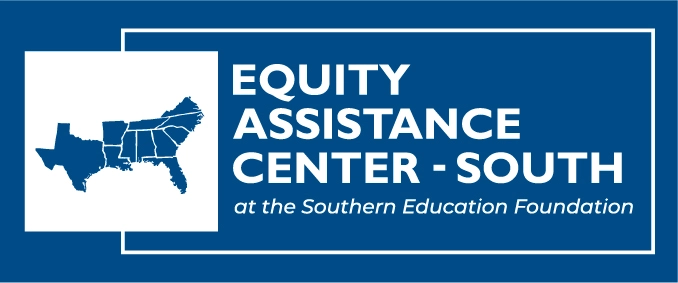EAC-South Webinar Offers Ways to Boost Student Attendance
By Kyra Watts, EAC-South at SEF Communications Associate
On April 25, the Equity Assistance Center-South (EAC-South) and the Student Engagement Attendance Center (SEAC) presented the first webinar in its free Educational Equity Indicators Professional Learning series, How to Improve Student Attendance & Engagement: Stories from the South. The series crosswalks important research findings with examples from the field to help educators and policymakers gain a better understanding of how to address chronic absenteeism. Educators from Nashville, TN, and Columbia, SC, shared practical examples that demonstrate how the long-term impact of the pandemic continues.
Chronic absence is marked by a child missing 10% or more of the days in a school year for any reason, according to the SEAC. Frequent absences are deeply tied to education inequities for students, further exacerbated by the pandemic.
Senior Advisor for the EAC-South Donna Elam shared a National Academy of Sciences, Engineering and Medicine (NASEM) report in 2019 that identified two categories of educational-equity indicators: disparities in student outcomes and disparities in student access to opportunities and resources. Chronic absenteeism is one of the indicators of disparities in student outcomes – because most don’t learn at high levels when they aren’t in school.
During the webinar, Irmo High School Vice Principal Jessica Marze explained how they used data, observation and recommendations to identify the issues impacting their students’ attendance. The Irmo High School student focus process lays out how they communicate, monitor and evaluate their students in order to resolve these issues and increase parental involvement.
Warner Elementary School Principal Ricki Gibbs also shared his new approach to address chronic absenteeism at his Tennessee school, the Warner Exchange. With Principal Gibbs’ approach, for each day a child attends school, he or she receives five Warner bucks. Parents can use the accumulated Warner bucks to “shop” in a store located in an upstairs room of the East Nashville school. The store was stocked full of household cleaning supplies, groceries, and other goods donated by local churches, community members and others.
“At Warner, we have worked extremely hard to reduce chronic absenteeism,” said Regina Etter, the director of magnet schools at Metro Nashville Public Schools, during the webinar. “We are building up that community within the home and it is absolutely amazing.”
Reducing chronic absences requires addressing the challenges that keep students from getting to school. The Warner Exchange is a prime example, addressing the connection between students missing school and families’ need for basic necessities. The Warner Exchange also allows the school to support its community and provides students and their families with a reason to prioritize school attendance.
The webinar was the first for the EAC-South since the federally funded center arrived at the Southern Education Foundation. The center’s series of free professional development events for educators, provides opportunities for discussion, and useful frameworks, strategies and promising practices for improving and monitoring student success and strengthening educational opportunities for all students.
Presenters:
- Donna Elam, Senior Advisor for the EAC-South
- Jarle Crocker, Director, Student Engagement and Attendance Center (SEAC)
- Taneco Reid, Project Manager at SEAC
- Carrie Murphy, Senior Study Director at Westat
- Chelsea Sorensen, Education Project Specialist at Westat
Guest Speakers:
- Ricki Gibbs, Principal of Warner Elementary School in Nashville, Tennessee
- Regina Etter, Director of Magnet Schools at Metro Nashville Public Schools
- Jessica Marze, Vice Principal at Irmo High School- International School for the Arts in Lexington, Richland counties school district five
Key Resources:
- Student Engagement and Assistance Technical Center (SEAC): Attendance Reflection Tool
- FutureEd: The Attendance Playbook
- Community Cafe model – Monthly Zoom meetings with small group breakouts and translators to engage families on a range of topics
Click here to view the recording of this webinar.
This EAC-South webinar series is covering topics such as:
- Student K-12 learning and engagement
- Educational attainment
- The impact of racial, ethnic, and economic segregation
- Equitable access to high-quality curricula and instruction
- Equitable access to supportive school and classroom environments
